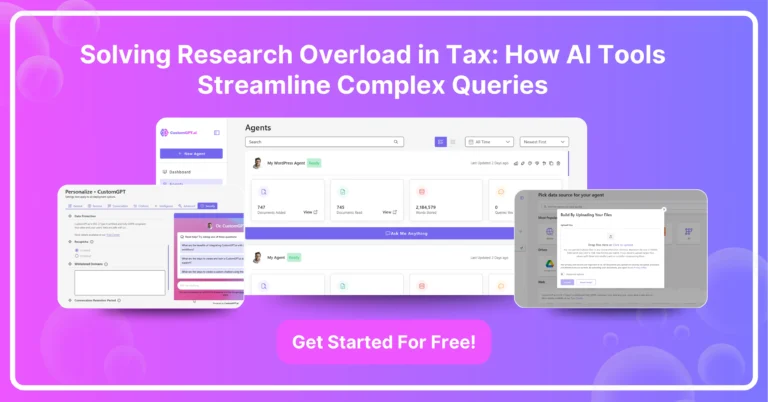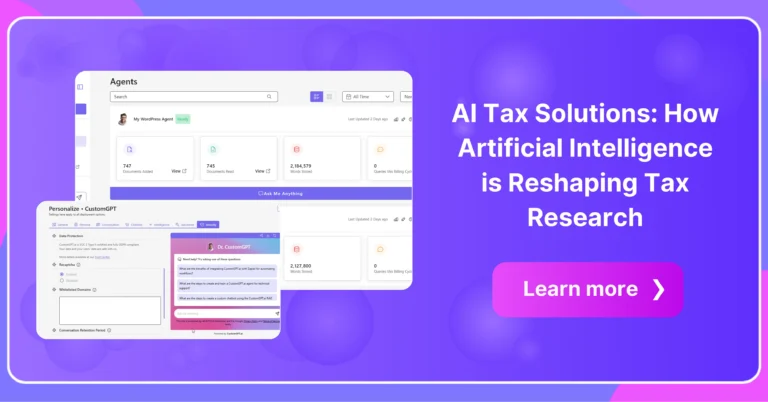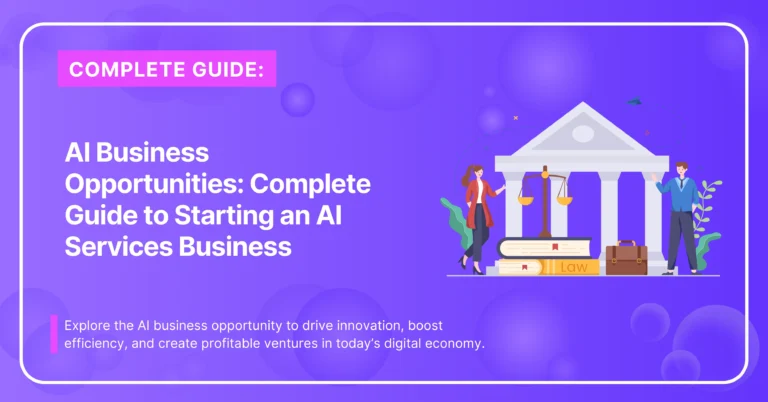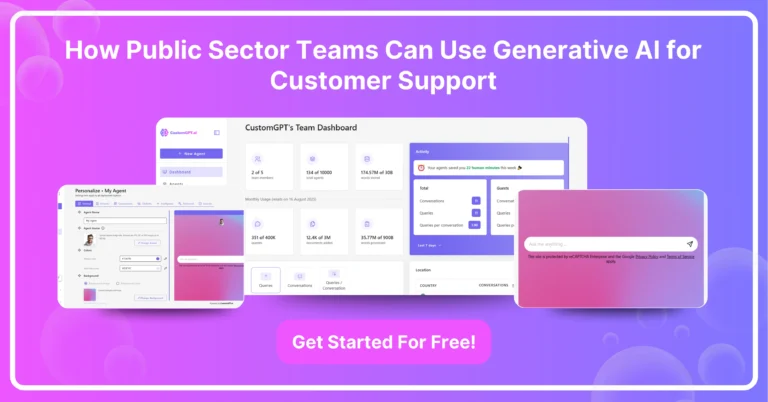How to Automate Your Agency in 2025 to drive growth, prevent burnout, and free hours each week for high impact work.

Make Money With AI
Join our Partner Programs!
Boost your reputation, drive revenue and grow your business with CustomGPT.ai.
In today’s fast-paced market, clients expect lightning-fast responses and flawless execution. Manual processes cannot keep up, leaving agencies stuck in a cycle of busy work and missed opportunities.
Discover ten tactics, from automated onboarding to AI powered dashboards, that save time, cut errors, and let your team focus on creativity.
Whether you are a boutique shop or a growing mid-sized agency, these tactics will help you scale sustainably. Get ready to transform your operations, delight your clients, and watch your agency thrive in 2025.
Defining Agency Automation and Its Importance
Agency automation refers to the implementation of technology-driven workflows to handle routine agency tasks. It encompasses everything from automated lead capture and client communication to project tracking and billing.
At its core, agency automation relies on tools such as CRM platforms, workflow engines, and AI assistants. These systems work together to eliminate manual handoffs and ensure seamless data flow across your operations.
The primary benefits include reduced human error, faster turnaround times, and consistent client experiences. By shifting repetitive work to automated processes, your team can devote more energy to strategic and creative initiatives.
In an increasingly competitive landscape, agency automation is no longer optional. It serves as a catalyst for scalability, enabling agencies to grow sustainably while maintaining high standards of quality.
Core Benefits: Time Savings and Scalability
By automating repetitive tasks and standardizing workflows, agencies can significantly reduce the hours spent on manual processes while ensuring consistent execution across projects.
This efficiency not only frees up your team’s time for high-value work but also lays the foundation for handling increased workloads without proportional increases in headcount.
- Faster Turnaround: Automations like templated email sequences and batch invoicing cut down administrative lead times, enabling quicker client deliverables.
- Error Reduction: Automated data entry and approval workflows minimize human mistakes, improving accuracy in reporting, billing, and client communications.
- Resource Optimization: With routine tasks handled automatically, staff can focus on strategy, creative development, and client relationship building.
- Predictable Capacity: Standardized processes provide clear metrics for workload capacity, making it easier to forecast team availability and plan new projects.
- Effortless Scaling: As client demand grows, you can onboard additional accounts or campaigns simply by duplicating existing automated workflows, rather than hiring new personnel for every increase in volume.
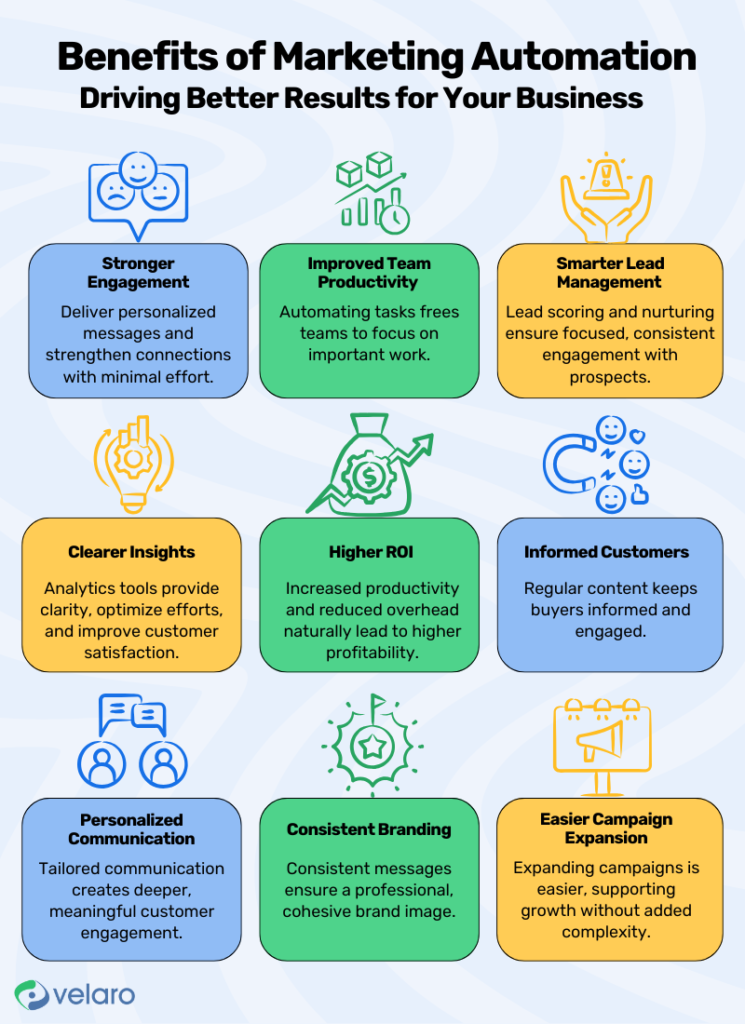
Harness AI to Transform and Scale Your Business Operations
Assess your business processes to identify repetitive tasks and data-heavy workloads. These might include customer support inquiries, lead scoring, or routine report generation.
Select AI tools that align with your needs such as chatbots, machine learning models, and natural language processing services. Ensure they integrate seamlessly with your CRM, project management, and communication platforms.
Pilot AI solutions on a small scale to test performance and gather user feedback. Use the insights to fine tune model parameters and improve accuracy before full deployment.
Monitor key performance indicators with dashboards to track time savings, error rates, and ROI. Continuously update and retrain AI models to adapt to evolving business requirements and maintain efficiency.
How AI Automation Agencies Unlock Profitable Growth
AI automation agencies meet demand for efficiency with tailored workflow solutions and earn revenue through setup fees, maintenance retainers, and performance-based incentives.
Many agencies adopt subscription pricing for their proprietary platforms, ensuring a steady income stream as clients rely on their tools. Others bundle AI strategy consulting with development and support, allowing for premium billing rates.
Profitability hinges on delivering clear ROI, when clients see measurable time savings or cost reductions, they often expand engagements. Repeat business and referrals also bolster margins, turning successful projects into scalable revenue engines.
As AI technology evolves, agencies that continuously refine their offerings and stay ahead of trends will sustain high demand. By combining technical expertise with industry knowledge, these firms can maintain strong profit growth in the years ahead.
10 Proven Strategies to Automate Your Agency
These ten strategies streamline every part of your agency, from client onboarding and CRM workflows to AI chatbots, templated proposals, integrations, and real-time reporting dashboards.
They also cover social media scheduling, automated time tracking and invoicing, AI lead scoring, and continuous monitoring. Implementing them cuts manual work, reduces errors, speeds delivery, and frees your team for strategic and creative projects.
1. Automate Client Onboarding
Set up automated intake forms that collect client details, project requirements, and preferences right into your project management system. This removes the need for manual data entry and ensures accuracy from day one.
Use workflow tools to trigger welcome emails, kickoff meeting invitations, and internal task assignments based on form submissions. By standardizing these steps, every new engagement follows the same high-quality process without extra effort.
2. Implement CRM Workflow Automation
Configure your CRM to move leads through qualification stages automatically when they meet certain criteria, such as form completions or email interactions. This ensures no prospect falls through the cracks and keeps your sales pipeline up to date.
Create automated follow-up sequences that send personalized emails or SMS messages to nurture leads over time. With timed reminders for your team, you maintain momentum without having to track each interaction manually.
3. Deploy AI Chatbots for Customer Support
Integrate chatbots on your website and messaging platforms to answer common customer questions around the clock. They can handle everything from pricing inquiries to scheduling demos, so your team spends less time on routine support.
Train the bot with your knowledge base and escalate complex issues to human agents when needed. Analysis of chat transcripts also reveals gaps in your documentation, helping you improve both the bot and your overall support materials.
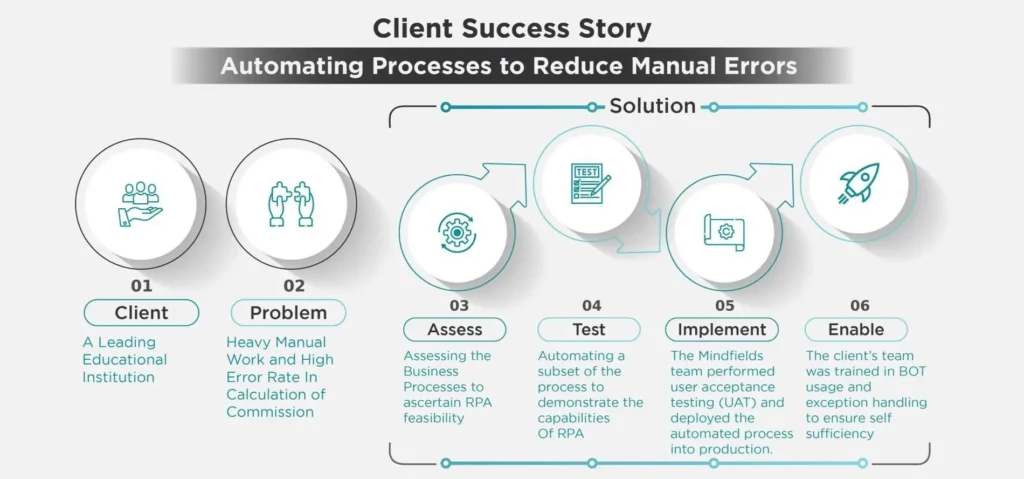
4. Automate Proposal and Contract Generation
Use proposal software that pulls client data, scope details, and pricing into prebuilt templates at the click of a button. This speeds up delivery, keeps branding consistent, and lets you customize only the unique parts of each document.
Include e-signature integration so clients can approve and sign contracts online, triggering automatic status updates in your system. This removes friction from the approval process and gets projects started faster.
5. Orchestrate Task Workflows with Integration Platforms
Connect your core tools—like email, chat, project management, and file storage, using platforms such as Zapier or Make. For example, when a Slack message is marked “approved,” automatically create a task in Asana or Trello.
These connections eliminate repetitive hand-offs, reduce errors, and ensure that information flows freely between teams. You can even set conditions and filters so only relevant messages trigger actions.
6. Build AI-Powered Reporting Dashboards
Link your marketing, sales, and financial data sources to a AI tool that refreshes reports in real time. Instead of exporting spreadsheets and merging data manually, you get up-to-date charts and tables with no extra work.
Use AI features to highlight trends, flag anomalies, and forecast performance. These insights guide strategic decisions and free analysts from the tedium of data preparation.
7. Schedule and Optimize Social Media Automatically
Plan your content calendar in advance and have a social media platform post automatically at optimal times for engagement. You can queue hundreds of posts across channels, ensuring a steady and consistent presence.
Leverage AI suggestions for hashtags, captions, and visuals to maximize reach. Analytics then feed back into your strategy, showing which themes perform best.
8. Streamline Time Tracking and Invoicing
Adopt a time-tracking tool that logs hours against projects automatically, based on digital activity or manual timers. This gives you precise data on where team efforts are going without chasing timesheets.
Integrate that data with your invoicing system so bills generate themselves at the end of each cycle. Automated payment reminders help maintain cash flow and reduce overdue invoices.
9. Leverage AI for Lead Scoring and Qualification
Implement an AI model that analyzes prospect behavior, firmographics, and engagement history to assign a score to each lead. Your sales team can then prioritize follow-ups on the most promising opportunities.
Continuously retrain the model with closed-won and closed-lost outcomes so scoring improves over time. This feedback loop ensures the AI adapts to market changes and your evolving ideal customer profile.
10. Establish Continuous Monitoring and Optimization
Set up alerting systems that notify you when an automation fails or when key metrics dip below thresholds. For example, you might get an email if a Zapier workflow stops running or if response times exceed service-level targets.
Schedule regular reviews of error logs and performance dashboards to identify improvement opportunities. By iterating on your automations, you keep them reliable and aligned with your agency’s changing needs.

Introducing CustomGPT.ai: Your Agency’s AI Powerhouse
CustomGPT.ai lets you build and deploy bespoke AI assistants powered by your own data and brand voice. With an intuitive interface, you can upload documents, set up knowledge bases, and configure conversational flows without writing code.
The platform supports fine-tuning on proprietary content so your assistant delivers accurate, context-aware responses. This ensures every interaction reflects your agency’s expertise and keeps sensitive information secure.
Seamless integrations with popular tools like Slack, Zendesk, and HubSpot mean your Custom GPT works inside the apps your team already uses.
Automated triggers and webhooks keep workflows synchronized, reducing manual hand-offs and maintaining data consistency.
Advanced analytics give you visibility into question trends, response quality, and user satisfaction. By monitoring performance metrics and feedback, you can refine your assistant over time to improve accuracy and drive greater efficiency.
FAQ
What Is Agency Automation?
Agency automation uses software and workflows to manage repetitive tasks such as lead capture, onboarding, project management, and billing, ensuring seamless data flow without manual effort.
How Do I Automate My Business with AI?
Pinpoint repetitive, rule-based tasks; implement AI tools that integrate with your systems; pilot and refine them; then scale the automations that prove most effective.
Do AI Automation Agencies Make Money?
AI automation agencies are highly profitable by delivering ROI-driven services and earning through setup fees, maintenance retainers, subscriptions, and performance incentives.
Which processes should I prioritize for automation first?
Focus on highly repetitive tasks that consume the most time and are prone to errors, such as data entry, client follow-ups, and report assembly. Automating these delivers quick wins and builds momentum for broader automation initiatives.
How do I measure the success of my automation initiatives?
Track key performance indicators like time saved per task, reduction in error rates, client satisfaction scores, and revenue uplift. Compare these metrics before and after automation to quantify impact and justify further investment.
Conclusion
In summary, agency automation and AI-driven workflows offer a clear path to greater efficiency, accuracy, and growth.
By focusing on repetitive, high-impact tasks first and choosing the right tools, you can unlock significant time savings and deliver more consistent results.
Begin with small pilots, measure their impact, and scale only the automations that deliver real value. Free your team for creative work, delight clients, and drive sustainable agency growth.
How to automate your agency: Save time and scale effortlessly
Streamline operations and achieve growth with how to automate your agency.
Trusted by thousands of organizations worldwide





